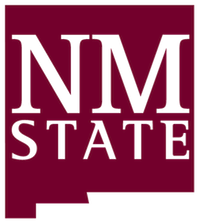Funding Sources
|
|
A resource manager inspecting a stream channel following flooding after the Wallow Fire. |
State Programs
Many state agencies have programs to mitigate the impacts of wildfire. These include:
Arizona: Arizona State Forestry Grant Programs
Colorado: Natural Resources Grants & Assistance Database
New Mexico: Flood Risk Evaluation Prior to Flooding and Hazard Mitigation Grants, General Forest Restoration Assistance, Public Water Infrastructure Funding, Other Grant Notices
Nevada: Nevada Division of Forestry Grants
Utah: Utah State Forestry Grant Programs
Federal Programs
Many federal agencies including NRCS, FEMA, and the U.S. Army Corps of Engineers manage programs and provide funding to communities and private landowners to respond to post-fire threats. Some of these programs require partnerships with Conservation Districts or local governments. To find out information about groups working in your area, check out our Community Groups page.
Catalog of Federal Funding Sources for Watershed Protection
The Environmental Protection Agency (EPA) maintains the Catalog of Federal Funding Sources for Watershed Protection Website. It is a searchable database of various financial assistance sources, including grants, loans, and cost-sharing programs. The site is searchable based on the type of assistance, the organization applying, match requirements, or keyword.
EWP-Emergency Watershed Protection Program
The Emergency Watershed Protection Program (EWP), administered by NRCS, aims to alleviate threats to lives and property within watersheds after disasters, including wildfire. EWP can help landowners reestablish vegetative cover, control gully erosion, protect stream banks, remove debris, and install levees. Requests to the EWP must be sponsored by local subdivisions of state government, such as conservation districts, or by the states themselves. EWP may provide up to 75 percent of funds needed to restore natural watershed function. The community or local sponsor is responsible for the remaining 25 percent of the cost, however volunteer hours count toward the local match.
EQIP-Environmental Quality Incentives Program
The Environmental Quality Incentives Program, administered by NRCS, can be used in some cases to aid landowners in post-fire restoration. EQIP provides cost-share assistance to private landowners for restoration that includes tree planting and forest health improvements.
FEMA-Federal Emergency Management Agency
In some cases, severe wildfires are declared national disasters and FEMA manages the federal response. Hazard mitigation grants, which provide assistance to state and local governments to implement long-term hazard mitigation measures after a major disaster, may be available. Funding to communities to repair or replace infrastructure can also be provided by FEMA.
CAP-Continuing Authorities Program
The Continuing Authorities Program (CAP), administered by the US Army Corps of Engineers, funds relatively small projects dealing with floodplain management, flood control, ecosystem restoration, erosion control, and stream bank protection. Requests for CAP funds can only come from State Emergency Management Agencies or Tribal governments that can provide matching funds.
Emergency Flood Protection
The US Army Corps of Engineers is able to provide emergency assistance during flood events. Through this program, USACE can offer technical assistance to State and local governments to develop contingency plans, evacuation plans, and generally prepare for an emergency. USACE resources can only be requested by State Emergency Management Agencies or by Tribal governments once they have committed all available resources. The contact person for this program depends on which district you live in. The Army Corps districts active in the Southwest include the Sacramento, Albuquerque, and Los Angeles.
Permanent Flood Protection Solutions
The US Army Corp of Engineers can construct large-scale flood risk management projects. These funds can only be requested by State Emergency Management Agency or by Tribal governments once they have committed all available resources. The projects require matching funds with a 65/35 Federal/Non-Federal cost-share. The contact person for this program depends on which district you live in. The Army Corps districts active in the Southwest include the Sacramento, Albuquerque, and Los Angeles.
Tribal Partnership Program
Tribal governments can request resources from the US Army Corps of Engineers through the Tribal Partnership Program, which allows USACE to spend up to $100,000 on a reconnaissance study of various water resources and related issues including flood damage reduction, environmental restoration and protection, watershed planning, cultural resource studies, and more. Matching funds are required, typically 50/50 with in-kind contributions allowed. The contact person for this program depends on which district you live in. The Army Corps districts active in the Southwest include the Sacramento, Albuquerque, and Los Angeles.







